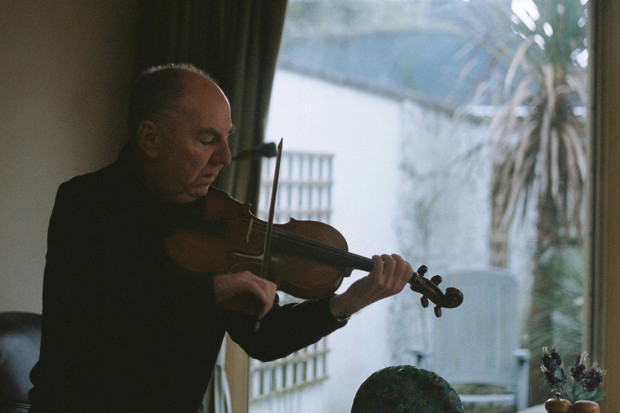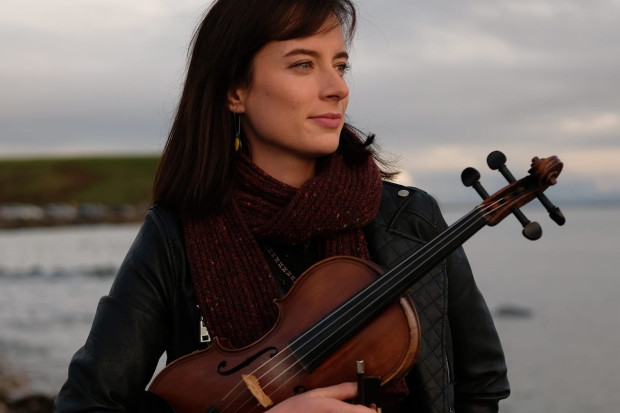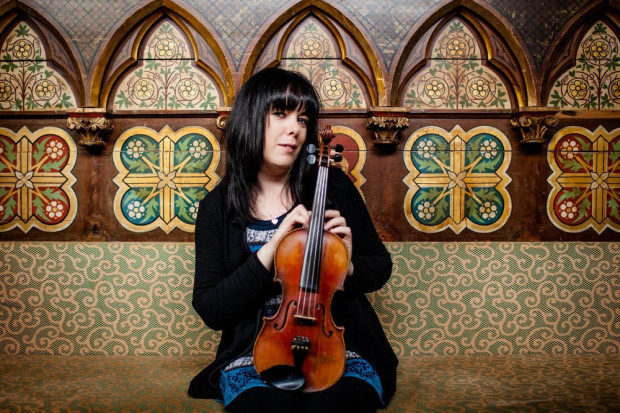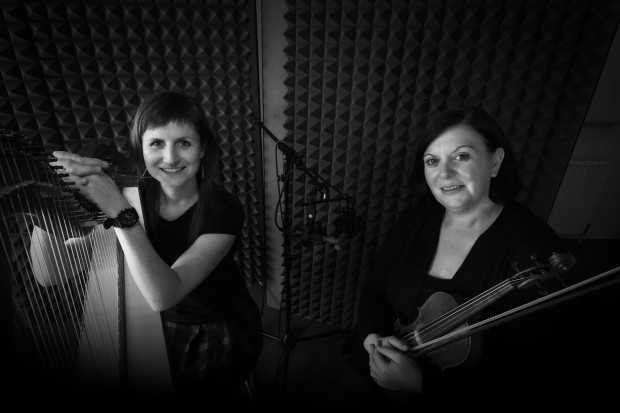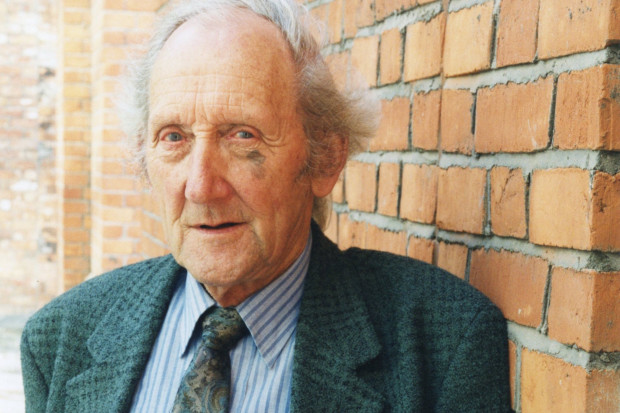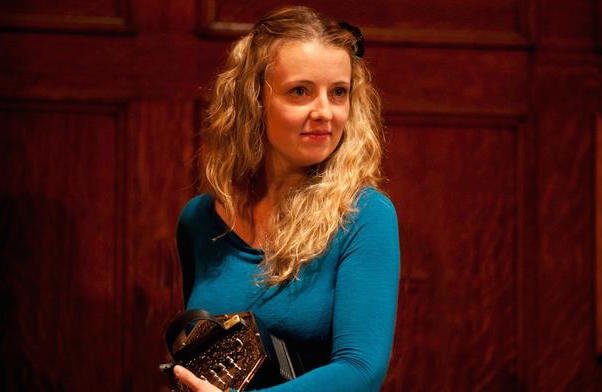
Florence Fahy
From the North Country
Tunes From the Flaggy Shore is the debut recording of concertina player Florence Fahy. As the title hints, the music is inspired by her native north county Clare, which includes Doolin, Kilfenora and her own area, New Quay. The region has perhaps been sidelined by West and East Clare, which have been made famous by musicians such as Martin Hayes and Willie Clancy, but North Clare’s traditional musicians have included the Russell family, the Kilfenora Ceili band and concertina player Chris Droney from Bellharbour – a neighbour of Fahy’s according to the liner notes. The notion of a North Clare identity is gaining traction of late, with Ensemble Ériu’s releases being a favourite of mine.
As with many solo recordings, Tunes From the Flaggy Shore is mainly accompanied and features, with one exception, the piano or mandocello of Garry O’Briain. On several tracks Fahy duets with flute-player Bébhinn Ní Bhriain, fiddler Marien Collins or with her father Martin Fahy on concertina.
Discerningly sparse
Fahy’s instrumental style could be considered discerningly sparse, with well-placed cuts and double-stops to mark her phrasing. Her steady, rhythmic playing is reminiscent of the music of Droney and the standout display of her use of ornamentation is in the tight triplets in the only unaccompanied track, the barndances ‘The New Broom’ and ‘If There Weren’t any Women in the World’. Barndances require a certain playfulness which Fahy has captured brilliantly here.
She maintains that rhythmic stride throughout the album but the high point is midway through with the vigorous concertina-fiddle duet of ‘The New Copperplate’ and ‘The Old Copperplate’. In contrast, the closing song-air waltzes in a father-daughter duet are a fitting wind down to the 19-track recording.
Nuanced tunes
O’Briain’s adaptability as an accompanist really shines in the way he approaches the dynamics on tune sets. The second set of hornpipes, ‘An Buachaill Dreoite’ and ‘Kilcooley Wood’, is underpinned by staccato piano motifs that seep in halfway through its first tune. His harmonic treatment of a crepuscular G-minor jig from Paddy Fahey reflects the atmosphere the composer’s tunes are noted for. Twentieth-century composers actually appear throughout the recording: nuanced tunes from Vincent Broderick, Paddy O’Brien and Sean Ryan seem to suit Fahy’s approach to playing because of the pace she sets.
The liner notes have a personal leaning. Here we get a sense of the way the music has played a role in her life. Although now based in Boston, Massachusetts, her musical formation in North Clare abides.
With a running time of over an hour, duration could be a concern on Tunes from the Flaggy Shore, but the album can also be appreciated in smaller portions. The subtleties become more apparent with each additional listen on a collection that conveys the warmth traditional music can elicit.
It is an album that I can see myself returning to for immersive listening in its mix of rhythmic steadiness and immaculate melodic renderings.
–
This review is published as part of a new scheme for music writers in County Clare. The Journal of Music/Clare County Council Music Writer Mentoring Scheme is supported by Clare Arts Office and was launched in March 2017. Over 12 months, the editorial team of The Journal of Music are working with four new writers – Deirdre Clare, Ian Bascombe, Ruth Smith and Alan Reid – to expand the magazine’s coverage of musical life in the county. The first five reviews focused on the Riches of Clare concert series and Floriane Blancke (Ian Bascombe), Paul Brady at Glór (Deirdre Clare), Lisa Hannigan and An Tara (Ruth Smith), and The Boruma Trio (Alan Reid).
This is one of three schemes currently underway. The second – supported by Galway City Council – supports five new writers to cover musical life in Galway City. The first six reviews include Overhead, the Albatross and Talos (Vincent Hughes), RTÉ Concert Orchestra (Jake Morgan), Brian Wilson (Dylan Murphy), Lankum (Shannon McNamee) and Loah (Julie Seagrave).
The third scheme, for writers about music in Northern Ireland, is supported by the Arts Council of Northern Ireland. For more, visit https://goo.gl/hVPVr5
For further details on the background to the schemes, please visit https://goo.gl/QY83ga.
Published on 21 February 2018
Alan Reid is a banjo player from County Leitrim. He featured on the compilation 'Leitrim Equation 3', recording duets with Dónal Lunny and John Carty, and can also be heard with the band Arum whose debut was released in 2016. In 2017, he joined the band Goitse and embarked on tours of the US and Europe. Alan has also recently released an album with Rachel Conlan titled 'A Quare Yield'. He is a graduate of the Irish World Academy BA and MA traditional music programmes and is based in the Burren in County Clare.












